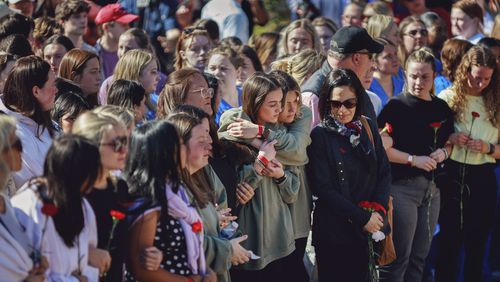In honor of what would have been German-Swiss painter Paul Klee's 139th birthday Tuesday, Google's doodle team patched together a colorful cubist tribute for the search engine's homepage.
The painter, born in Münchenbuchsee, Switzerland, in 1879, grew up with a love and knack for music. His parents, a German music teacher and Swiss singer, inspired his own early talents. At age 11, Klee received an invitation to play violin as a member of the Bern Music Association.
» RELATED: Who was Nelly Sachs? Google honors poet who escaped Nazi Germany
After playing in the symphony orchestra as an accomplished violinist, Klee turned to painting.
"As a musician, he played and felt emotionally bound to traditional works of the eighteenth and nineteenth century, but as an artist he craved the freedom to explore radical ideas and styles," according to Klee's official biographical website.
Still, he brought his "musical sense of rhythm to the visual arts," Google noted in its blog. "He studied dots, lines, planes, and forms observed from nature—whether from the fish tank he kept at home or the veins seen on leaves or the human body—applying his observations to a vast body of work."
» RELATED: Who was Max Born? Google honors Nobel Prize-winning physicist who escaped the Nazis
In fact, in his lectures at the German art school Staatliches Bauhaus, the artist was known to compare "the visual rhythm in drawings to the structural, percussive rhythms of a musical composition by the master of counterpoint, Johann Sebastian Bach," the Art Story non-profit wrote about Klee.
As an early teen, Klee began sketching landscapes and caricatures, focusing for many years on his drawing skills. It wasn’t until 1911, when Klee met Wassily Kandinsky, Franz Marc and August Macke of Der Blaue Reiter — an influential circle of artists — that he became engulfed in the world of modern art and experimentation. Klee’s work was even included in the second Der Blaue Reiter exhibition in 1912, along with renowned artists Pablo Picasso, Robert Delaunay and Georges Braque.
His relationship with Delaunay and a trip to Tunisia in 1914 helped influence his experimentation with abstraction and color. After the trip, Klee painted several abstract works based on his watercolor landscape paintings of the North African country.
» RELATED: As years go by, Georgia Holocaust survivors more vocal about war stories
When World War I broke out, Klee remained “reserved in his opinions” but “enthusiastically accepted a position on the Executive Committee of Revolutionary Artists” when a communist government was declared in Munich, according to the Art Story.
He went on to teach at Bauhaus in 1920 before leaving for an art academy in Dusseldorf 10 years later.
In 1922, Klee produced one of his most famous works, “Affected Place.”
Unfortunately, when Hitler was named Chancellor of Germany in 1933, Klee was “denounced as a ‘Galician Jew’ and a ‘cultural Bolshevik’” and returned to Switzerland with wife Lily Stumpf after losing his teaching position in Dusseldorf.
Just a couple of years after his return, Klee became ill with progressive schleroderma, a rare disease that involves the hardening and tightening of the skin and connective tissues.
According to the Art Story, Klee’s creativity resurged between 1937 and 1939, with many of his later works dealing with the “grief, pain, resilience, and acceptance of approaching death.”
“Some will not recognize the truthfulness of my mirror,” Klee wrote in his diary. “Let them remember that I am not here to reflect the surface... but must penetrate inside. My mirror probes down to the heart.”
The artist died on June 29, 1949 in Locarno, Switzerland. His work would go on to influence painters all over the world, from Jean Dubuffet in Europe to New York’s Abstract Expressionists and Color Field painters Jules Olitski and Helen Frankenthaler.
About the Author






